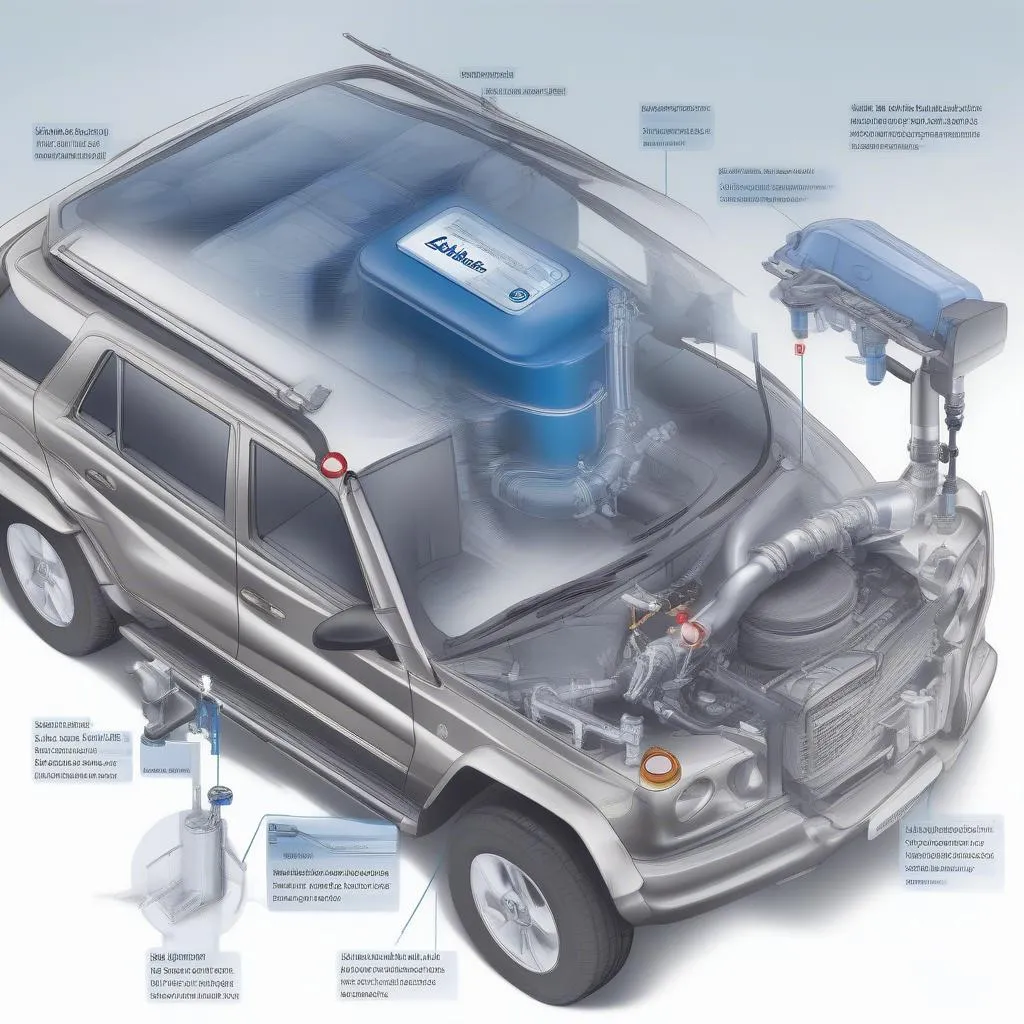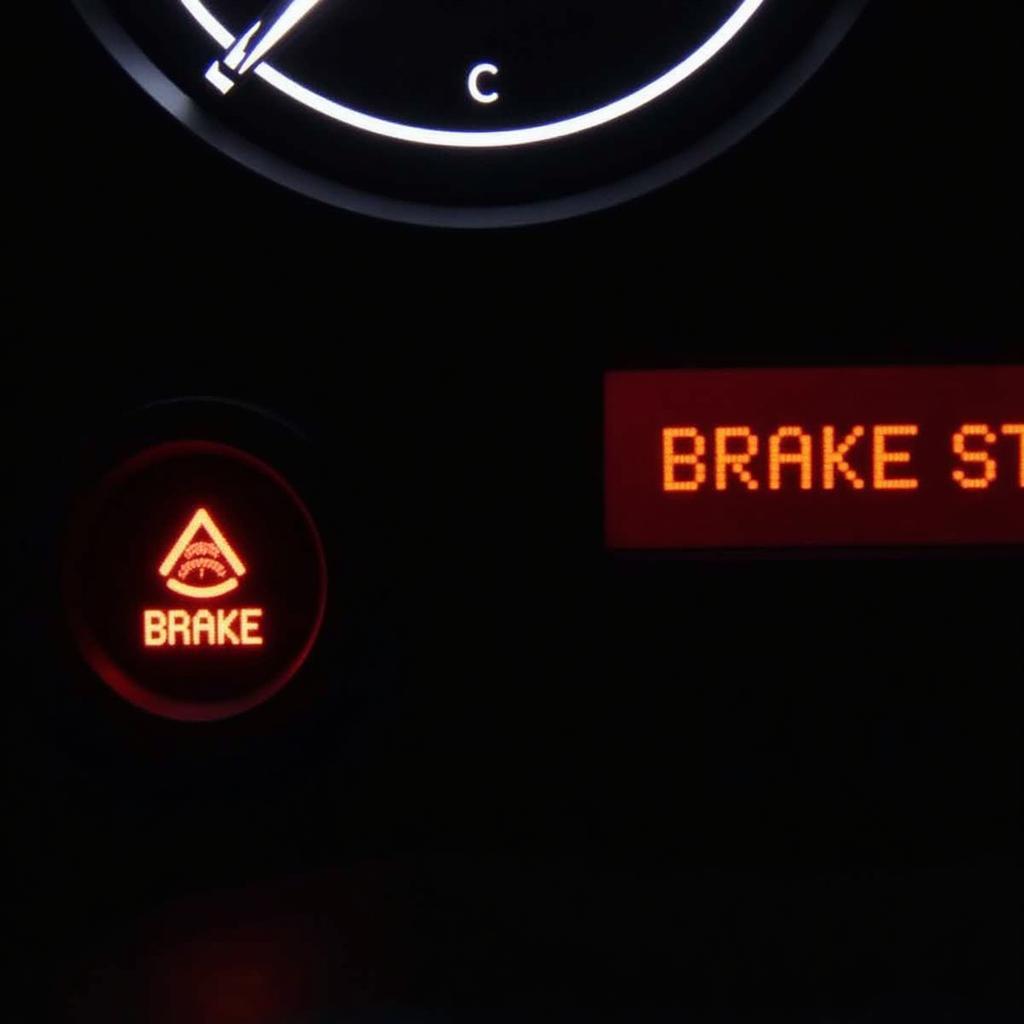If you own a 2010 Volkswagen Eos, you may have encountered a persistent seat belt warning light or chime, even when all passengers are buckled up. This issue has been a common topic of discussion on VW enthusiast forums, including vwvortex.com, where owners share their experiences and seek solutions. This comprehensive guide will delve into the common causes of this problem, provide troubleshooting tips, and outline potential solutions to help you regain peace of mind on the road.
Understanding the Seat Belt Warning System in Your 2010 VW Eos
Before we dive into troubleshooting, it’s essential to understand how the seat belt warning system works in your Eos. The system comprises sensors, a control module, and warning indicators (both visual and audible). When you start your car, the system performs a self-check. If a fault is detected, or if the system doesn’t sense a passenger in a seat with a fastened belt after a certain period, the warning light on the dashboard illuminates and a chime may sound.
Common Causes of a Malfunctioning Seat Belt Warning in a 2010 VW Eos
Several factors can contribute to a malfunctioning seat belt warning system in a 2010 VW Eos:
- Faulty Seat Belt Buckle Switch: The most common culprit is a faulty seat belt buckle switch. This switch, located within the buckle mechanism, signals to the system when the belt is fastened. Over time, these switches can wear out, become dirty, or experience electrical issues, leading to a false warning.
- Wiring Issues: The wiring harness connecting the seat belt buckle switches to the control module can also be responsible for the problem. A loose connection, broken wire, or corrosion can disrupt the signal flow, triggering the warning.
- Faulty Seat Occupancy Sensor (Passenger Side): Some Eos models are equipped with a passenger occupancy sensor that determines if someone is sitting in the passenger seat. A faulty sensor may incorrectly signal an unbuckled passenger, even when the seat is empty.
- Software Glitch: In some instances, a software glitch within the car’s control module can cause the seat belt warning to malfunction. This is less common but can be resolved with a software update from a VW dealership.
Troubleshooting Tips for 2010 VW Eos Seat Belt Warning Issues
Before heading to a mechanic, you can try these troubleshooting steps:
- Check for Obvious Signs: Start by visually inspecting the seat belt buckles and wiring underneath the seats for any visible damage, loose connections, or debris.
- Fasten and Unfasten Seat Belts: Try firmly fastening and unfastening each seat belt multiple times. This can sometimes clear a temporary fault in the buckle switch.
- Check the Passenger Seat: If the warning primarily occurs when the passenger seat is empty, try placing a substantial weight on the seat to see if the sensor registers correctly.
- Consult Your Owner’s Manual: Your Eos owner’s manual contains valuable information about the seat belt warning system and may offer specific troubleshooting tips.
Solutions for 2010 VW Eos Seat Belt Warning Issues
If the troubleshooting steps don’t resolve the issue, consider the following solutions:
- Replace Faulty Seat Belt Buckle Switch: A mechanic can diagnose a faulty buckle switch using a diagnostic scanner. If the switch is confirmed as faulty, replacement is usually straightforward and relatively inexpensive.
- Repair or Replace Wiring: Repairing or replacing damaged wiring in the seat belt system requires specialized knowledge and should be handled by a qualified mechanic.
- Inspect or Replace the Passenger Occupancy Sensor: Diagnosing and addressing a faulty passenger occupancy sensor is best left to a qualified professional who can access and test the sensor properly.
- Software Update: If a software issue is suspected, a VW dealership can perform a software update on your car’s control module. This process may involve reprogramming the module with the latest software version.
“It’s crucial to address a persistent seat belt warning promptly,” says master VW technician, Michael Schmidt. “Ignoring it could not only result in a ticket in many areas but, more importantly, may mask a potential safety issue.”
Conclusion
A persistent seat belt warning in your 2010 VW Eos can be a frustrating experience. By understanding the common causes and following the troubleshooting tips outlined in this guide, you can take the right steps to diagnose and resolve the issue. Remember, while some solutions may involve simple DIY fixes, others require the expertise of a qualified mechanic. Addressing the problem promptly ensures your safety and peace of mind on the road.


